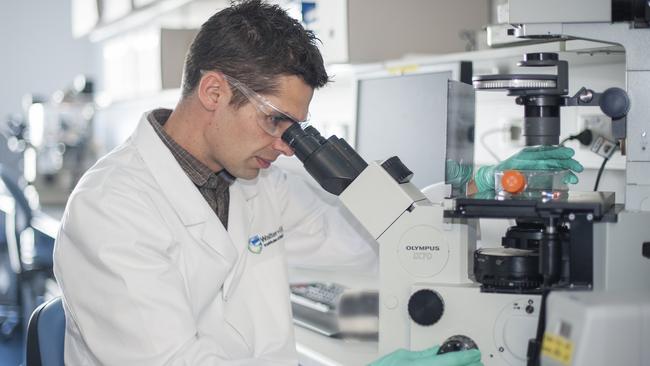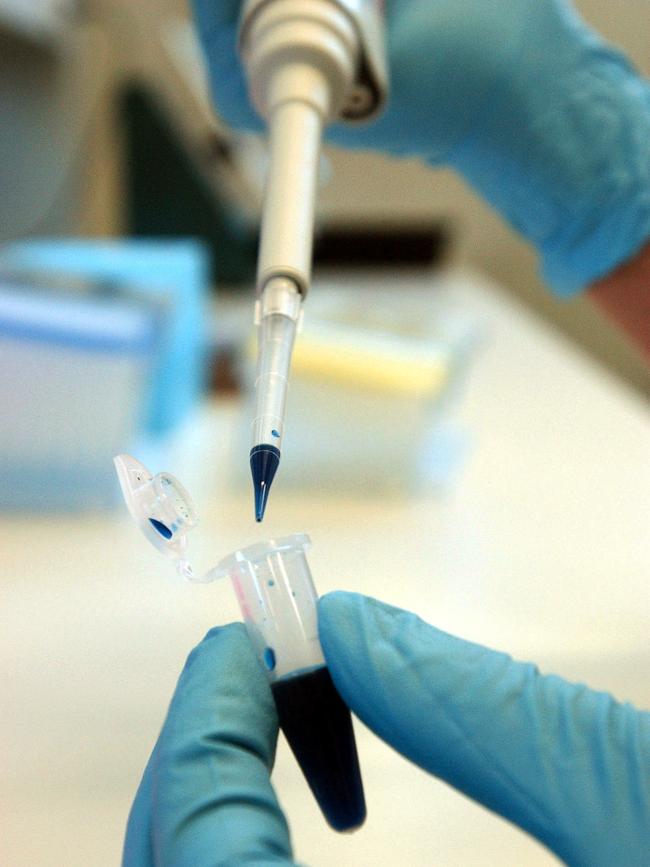New research from Walter and Eliza Hall Institute provides hope for curing child brain cancer
Mice may hold the key to curing the most common type of child brain cancer, with Melbourne researchers uncovering promising results.

News
Don't miss out on the headlines from News. Followed categories will be added to My News.
Australian researchers have twice been able to cure animals of the most common type of child brain cancer, by repurposing drugs used to treat other cancers.
In a further boost, they plan to test even more potentially lifesaving drugs after creating an innovative genetic “street map” of the aggressive brain cancer, medulloblastoma.
In a five-year international collaboration, led by Melbourne’s Walter and Eliza Hall Institute (WEHI) of medical research and the University of Queensland, they identified the crucial intersections cancer cells must travel through to spread and stay alive.
WEHI computational biologist Melissa Davis said after finding 40 connected genes responsible for the aggressiveness of the brain tumour, their aim was to block the crucial cell thoroughfares as a new way of halting the diseases.
“Given the complexity of these connections, the likelihood is if you give a targeted drug the cancer will probably figure out a way around it,” Associate Professor Davis said.
“Our strategy is to find what are the really important intersections to block; the places, bottlenecks or bridge to cross a river that you have to go through.

“The alternative is combinations of drugs, and we can use this map to show that if you target one particular place, where are the other places that you also need to target so the cancer doesn’t find a way around the blockage?
“By better understanding which genes are responsible for a really aggressive disease, the more effective therapy is and the less you give, so there are fewer side-effects.”
Current treatments for medulloblastoma include brain radiation, and the children who do survive are typically left with significant intellectual and physical disability.
Using their network, in separate studies the team tested two different anti-cancer drugs – one used to treat advanced breast cancer – in mice with brain tumours, to find it could block tumour growth.
“We actually cured a decent proportion of mice with a single drug,” said the lead author, UQ’s Dr Laura Genovesi.
“We’re not going to treat a kid with a single drug. It’s going to be combination with very powerful things like radiation and surgery.”
The team is now growing brain tumours in mice from samples taken from children’s tumours, and using these to test a series of drugs that are known to work on these “genetic intersections”, but have never before been tested in childhood brain cancer.
“This sort of strategy is extremely powerful,” said Prof Davis.
“Because we’re not trying to make a new drug, it doesn’t take us 30 years and the translation of our science into clinical practice can happen a lot faster.”




